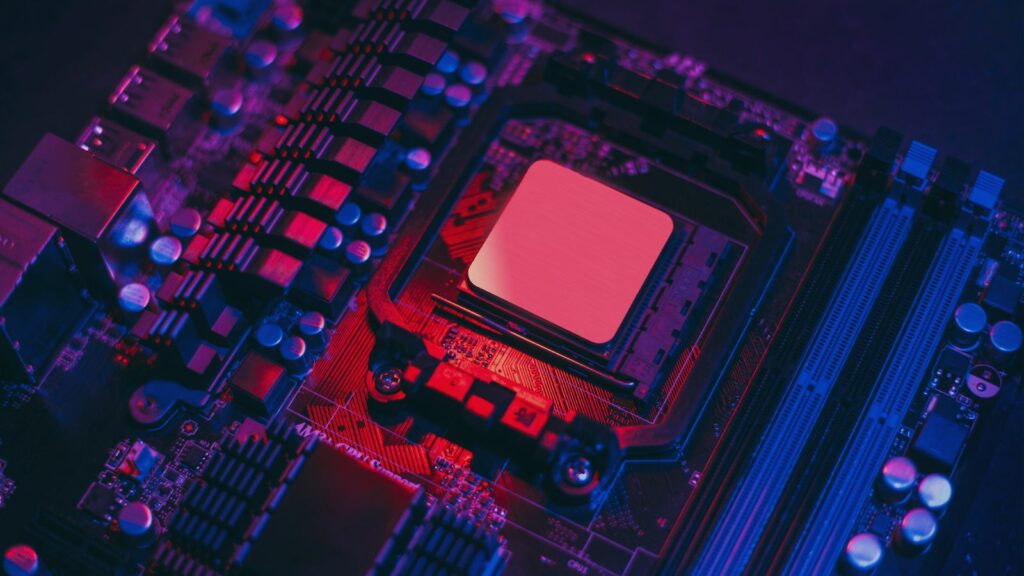Looking to undervolt your CPU but don’t know how?
We’ve broken down everything you need know about undervolting, including a handy step-by-step guide.

What is Undervolting?
Undervolting is an alternative to overclocking. When you undervolt, you are reducing the overall voltage that your component receives from the PSU. This will help to generate less heat resulting in quieter operation and reduced power consumption.
You can undervolt a variety of components, including the CPU, GPU, and RAM.
Want to learn more about the difference between overclocking and undervolting? Take a look at our blog post!

Why Should I Undervolt My CPU?
CPU undervolting is primarily helpful if you are struggling with excess temperatures. By undervolting, you can reduce the amount of heat your processor is generating, helping to improve your stability and potentially even increase the lifespan of your CPU.
What’s more, by allowing your fans to run at a lower speed after undervolting, you can enjoy whisper-quiet operation and reduced power consumption. Perfect for those looking to build an energy-efficient PC.
Pros and Cons to Undervolting Your CPU
Pros
- Less heat generated
- Typically quieter
- More efficient
- Reduced power consumption
- Can achieve the same clock speeds
Cons
- May result in changes to performance such as stability issues when experiencing heavy loads
- Complicated – not ideal for beginners
- Requires a lot of testing to find the sweet spot

How to Undervolt a CPU: Step-by-Step
If you’re looking to undervolt your CPU but don’t know where to start, we’ve broken it down step-by-step below.
What You Need
Before you begin, you’ll first need to ensure you’ve got the right tools. This includes:
- Your PC with a stable internet connection
- A dedicated undervolting software such as Throttlestop or AMD Ryzen Master
- Benchmarking software such as CPU-Z, 3DMark, or Cinebench
- Temperature and voltage monitoring software such as HWMonitor or Open Hardware Monitor
How to Undervolt
You’ll first need to download all the necessary software. In our example, we’ll be using CPU-Z to benchmark and test our processor, HWMonitor to keep track of temperatures, and Throttlestop to undervolt.
Once all your software is downloaded, open them all up and run the CPU-Z benchmark whilst monitoring performance via HWMonitor. Here, you’ll want to take note of the temperature of your cores and the maximum voltage that they reach during the benchmark. We recommend you make a physical note of these as this will serve as your starting point, so you don’t want to forget them!
From here, open up Throttlestop*. You may be presented with a warning pop-up about the software making significant changes to your CPU. This is true, so if you are comfortable with this, press OK to proceed.
In the main Throttlestop window, locate Speed Shift – EPP. This should be on the left side. Tick this option. This will enable the Speed Shift technology, otherwise known as Hardware Controlled Performance, which is responsible for improving performance and responsiveness by enabling the CPU to automatically switch to the best voltage/frequency depending on your workload.

From here, select the setting called FIVR. This will open up a new window and might look rather scary as it’ll be a huge overview of various settings.
In the FIVR Control column, make sure the following options are ticked;
- CPU Core
- CPU Core Voltage
- Unlock Adjustable Voltage
To undervolt your processor, you’ll need to adjust the Offset Voltage. You should do this in small increments to help you find that sweet spot. The final amount all depends on your processor. Older CPUs can struggle with big undervolts while modern-day processors, such as Alder Lake, can handle this bigger power adjustment.
Start by tweaking the millivolt (mV) value by a larger amount. What you pick depends on your chip, but –50mV is a safe starting point. If your PC continues to function correctly, you can go back and lower the voltage a little bit more.

Once you’ve adjusted the Offset Voltage, switch your selection in the FIVR Control column to CPU Cache and tweak the undervolt to be the same value as the CPU Core. From here, select Intel GPU and undervolt this slightly. This step is entirely optional but anywhere between 25-50mV is safe. It’s fine to skip this step, especially if you experience stability issues later as it’s not essential for tweaking your temperatures and voltages.
If you’re happy with everything, press Apply. Your PC may immediately crash, but don’t worry! If this happens, you need to go back, adjust your voltage settings, and go a little easier this time. You may also need to select OK > Save Voltage Immediately > Apply.
Now it’s time for you to put your voltages to the test by running the CPU-Z benchmark and monitor the temperatures/voltages in HWMonitor. Compare the values to the ones achieved before you undervolted. You should hopefully see an improvement.

If your PC doesn’t crash, we recommend you perform a few extra tests just to make sure everything is fine. Ideally, you should really put your PC to the test by running every application that you usually would, any games, Discord, Chrome tabs, etc. The trick here is to really stress your PC to check for any instabilities caused by undervolting.
If your PC doesn’t crash and you’re happy with the results, you’ve successfully undervolted your CPU! However, if not, you can go back and repeat the steps listed above but start with smaller 5-10mV increments.
*Throttlestop mainly works for Intel CPUs. If you are trying to undervolt an AMD processor and Throttlestop isn’t working, try AMD Ryzen Master.
Have You Tried Everything?
Are you still struggling with excess temperatures and unstable performance even after undervolting your CPU? There are still a few more things you can try before you give up! This includes trying a new CPU cooler or even reapplying your thermal paste. Don’t know how to go about applying some new thermal paste? We’ve got a blog post for that.
If all else fails, it might simply be time to treat yourself to an upgrade.
At Overclockers UK, we stock an extensive range of both Intel and AMD CPUs boasting the latest architectures and a high core/thread count to power your games like never before. We’ve picked out three of our faves below, but you can also explore our full collection.

Intel Core Ultra 9 285K Processor
- Intel Arrow Lake architecture
- LGA 1851 socket
- 24 cores and 24 threads
- Up to 5.75GHz boosted clock speed
- 125W TDP
AMD Ryzen 7 9800X3D Processor
- AMD Ryzen 9000 Series
- Zen 5 architecture
- Socket AM5
- 8 cores and 16 threads
- Up to 5.20GHz boosted clock speed
- 96MB 3D V-Cache


Intel i9 14900K Processor
- Intel 14th Gen
- LGA 1700 socket compatible
- 24 cores and 32 threads
- Up to 6.0GHz boosted clock speed
- Onboard graphics included
Learn More
Did You Undervolt Your CPU?
Did you undervolt your CPU? Got any tips to share? Leave them in the comments below.



